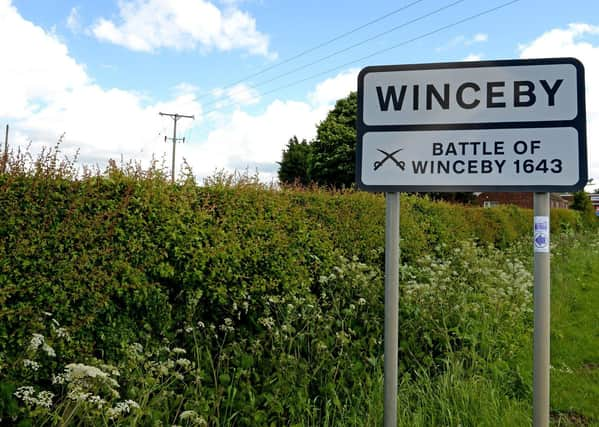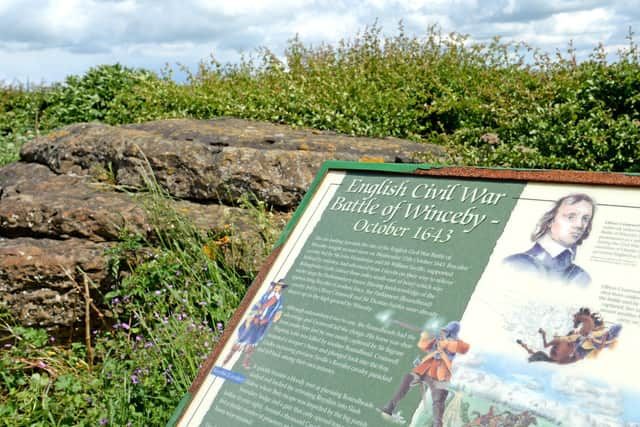The Battle of Winceby: The battle that could have changed English history...


A couple of miles to the east of Horncastle, the A158 winds its way up onto the rolling Wolds towards Hagworthingham and on to the Lincolnshire coast.
A right turn to Winceby almost goes unnoticed.
The village itself is a collection of just a few houses beside the leading B-road to Spilsby.


Advertisement
Advertisement
However, Sunday (October 11) marked the 377th anniversary of the Battle of Winceby.
The English Civil War was at its peak.
Anyone who sat through history lessons at school will no doubt have heard of battle-names like Edgehill, Marston Moor, Newbury and Naseby as the Royalist armies of Charles I fought the Parliamentary forces for control of the country. Winceby hardly earns a mention.
At the time, Oliver Cromwell, an MP, was rising through the ranks of Parliament’s New Model Army as a ‘colonel of horse’.
He would go on to lead the army and then rule the British Isles as Lord Protector after the Royalists lost the war – and Charles I lost his head.
Advertisement
Advertisement
Cromwell, though, very nearly lost his life on the rolling hills of Winceby.
In the opening stages of the battle, his horse was shot from under him, apparently by Sir Ingram Hopton.
Some accounts indicate Hopton acted like a ‘true gentleman’ and opted not to kill Cromwell as he lay exposed and defenceless on the ground.
Hopton was killed in the subsequent fighting and is commemorated by a memorial canvas found above the font in St Mary’s Church in Horncastle.
Advertisement
Advertisement
The canvas described Cromwell as the ‘arch rebel’ and bears the incorrect date of the battle (October 6 instead of October 11).
It is said that after leading the Parliament forces to victory at Winceby, Cromwell travelled to Horncastle to pay his respects to Hopton.
It wasn’t the only time Cromwell had ‘diced with death’ at Winceby.
Some accounts suggest that after the Hopton incident, he was again knocked from his horse.
Advertisement
Advertisement
This time, a Royalist horse pounded within inches of his head. A grateful Cromwell made the most of his good fortune.
There is no doubt he enhanced his already growing reputation by playing a leading role in the battle. It could have been so, so different.
The battle took place after Royalist forces set off from Lincoln to lift a siege of the garrison at Bolingbroke Castle, just a couple of miles from Winceby.
Under the command of Sir John Henderson, the Royalists numbered around 2,500 cavalry and dragoons.
Advertisement
Advertisement
En-route to Bolingbroke, they were intercepted by a similar sized force of Parliamentarians just outside the hamlet of Winceby.
It was Cromwell who led the decisive cavalry charge into the heart of the Royalist ranks.
The battles were over within 30 minutes, but the slaughter continued for many hours as the defeated Royalists attempted to flee and reach what they believed would be the safety of Horncastle – and the sanctuary of St Mary’s,
Many perished – the majority at a place called ‘Slash Hollow’ where Royalist forces were trapped against a parish boundary gate that only opened one way – against them.
Advertisement
Advertisement
In all, the Royalists lost around 300 men and the Parliamentarians only 20, with a further 60 wounded.
The carnage, it is said, continued until dusk and some would tell you desperate Royalist troops were dragged out of St Mary’s and killed.
Cromwell’s role in the immediate aftermath of the battle is not recorded.
Today, just one stone down a long, lonely lane indicates where the battle took place, although historians are still debating the actual site.
There are also conflicting reports about ‘Slash Hollow’.
Advertisement
Advertisement
What is certain is the decisive role Winceby played in the Civil War.
Within weeks of Winceby, the garrison surrendered at Bolingbroke.
Virtually all Lincolnshire was under Parliamentary control.
The rest of England was to follow.